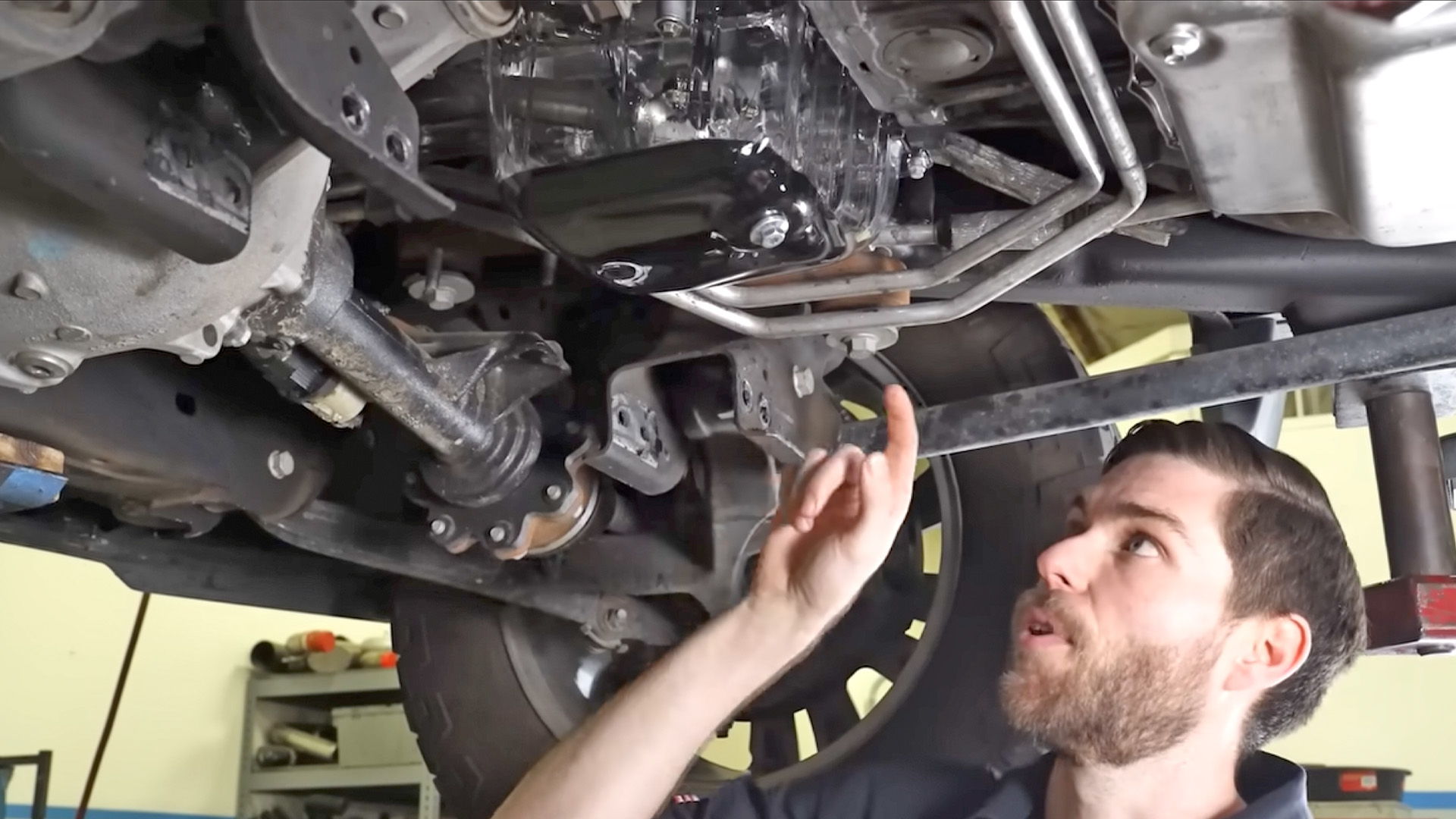

Whenever you change your vehicle’s oil, some of the old stuff always gets left behind. Your average lube tech isn’t flushing out all the oil galleys before unscrewing the drain plug, and really, there’s no need to. But what’s not great is when gunk and debris get trapped inside an oil system forever, settling at the bottom of the pan after every shut-off. That only increases the chance of it circulating through the engine and eventually causing a bad, bad day. This see-through oil pan test shows that’s exactly what happens on a GM Duramax diesel engine, and something tells me it’s not the only one with this problem.
Banks Power conducted the experiment during R&D for its new CoolRunner oil pan. That isn’t the point of this blog, but what you should know about Banks is that these guys have more experience developing diesel truck upgrades than pretty much anyone else. They’re especially savvy with the Duramax platforms after decades of tuning the GM oil burners, both for civilian and military use. It’s true that some companies spend a lot of time and money developing solutions for problems that aren’t really problems, but I think you’ll agree this has a purpose.
For starters, Banks didn’t set out to engineer a new Duramax oil pan strictly to remove this extra gunk. It’s a perk, for sure, but their main goal is to aid cooling by improving the design of key existing components rather than adding more parts. While prototyping and experimenting, they found that the factory L5P oil pan layout leaves old oil contaminants at the bottom for a couple of reasons.
“GM’s intent was not to retain oil in the pickup tube for priming,” Banks Power explains. “Oil trapped in the pickup tube is a byproduct of the use of a weld nut, used to allow for proper thread engagement on the drain plug to avoid stripping the threads, but, directed inwards as to not make the drain plug a low point on the pan. This results in a pool of oil at the bottom of the sump, and thus a pickup tube will retain additional contaminated oil.”

That weld nut they mention is the main culprit. Because it protrudes about an inch into the oil pan, there’s that much room for sediment and metallic debris to pool up without escaping. Additionally, because the oil pickup tube is submerged, the gunky oil is never displaced by air unless you pull the pan altogether, altering the pressure.
Check out this demonstration that shows what happens during a normal oil change. Even after swapping the filter, pulling the drain plug on the see-through oil pan that exactly mimics the stock design, and pouring in new oil, it mixes with the contaminants upon start-up. The old oil pushes through the pickup tube and almost immediately gives the fresh Amsoil synthetic a black tint.

Banks drained the leftover engine lubricant and it measured out to nearly a full quart. That means there’s quite a bit of metal debris and soot sticking around when you don’t want it to. The best course of action is to change oil early so it doesn’t fail and acquire debris in the first place, but that isn’t always what happens—especially if you aren’t the first owner.
The Banks presenter goes on to explain that their CoolRunner oil pan makes the drain plug a low point, also providing two quarts of added oil capacity. That means the pickup tube is no longer submerged, though Banks promises the amount of time necessary to supply oil from the sump to the engine is negligible. Finally, the CoolRunner has precisely arranged fins to assist with total drainage and, more importantly, cooling. I’ll let the video explain it in more depth, but it’s essentially the same approach Banks takes with its Ram-Air Transmission pans for Allison five- and six-speed automatics (it’s coming for the 2020+ model year trucks, too). They go all-out with these and the patent applications prove that Banks believes in what it’s doing to improve truck performance.


When all is said and done, the average truck driver might not care about stuff like this. But I can guarantee that anyone who’s considering swapping their engine oil and transmission pans for hardware that cools better wants to know what’s going on inside their pickup. This see-through pan provides a pretty rare and surprising look.
Got a tip or question for the author? Contact them directly: caleb@thedrive.com